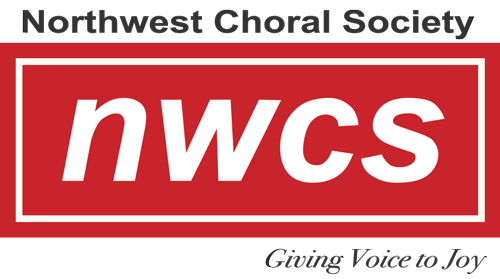Nun Komm, der Heiden Heiland, BWV 62 by Johann Sebastian Bach is a cantata based on Martin Luther’s chorale in eight stanzas. The violins start the cantata and in the third measure, the bass line enters dramatically, but it isn’t until the fourth note that the melody of the chorale tune in long note values becomes clear. The chorale melody then moves up to the oboes, and is finally sung by the sopranos. The first and last stanzas in this cantata are the original stanzas of Luther’s hymn and are sung by the whole chorus. Stanzas 2 and 3 are written as a tenor solo aria. Stanzas 4 and 5 are written as a bass solo recitative and aria and a Soprano/Alto duet recitative.
The opening chorus of BWV 62 is in a lively 6/4 meter. The emphasis is on a clear statement of the tune over extremely lively orchestral figuration.
After the strong b-minor opening of the Cantata, the tenor’s very long aria opens in G-major (A section) and is surprisingly expressive with a bright and innocent mood of wide-eyed and extroverted joy. The aria moves along in a dance-like 3/8 meter. The middle section of the aria (B section) is in e-minor and much more chromatic. The A section then returns to finish the aria.
The bass then sings a recitative and moves into his aria which is much more militaristic or combative than the tenor aria. The orchestration for this aria is unusual in that the strings are called on to play, in octaves, what is usually a bass line. The key is D-major which is often associated with royalty and victory.
With the soprano-alto recitative, the mood is changed again from combative to reflective awe and joy in counterpoint to the tenor aria which is more extroverted joy. The strings wrap the voices which sing in parallel thirds and sixths. As the duet unfolds, the music gradually comes back to the opening key of b-minor.
BWV 62’s final chorale, which is the doxology in the same key of b-minor as the opening chorale, is sturdy and powerful ending with the B-Major chord, also known as the Picardy chord.
Setting a festive atmosphere is Baroque Christmas Festival, arranged by Audrey Snyder. It is a collage of three Christmas favorites, Angels We Have Heard on High; Hark! The Herald Angels Sing, and Joy to the World, arranged in Baroque style combined with the Hornpipe theme from Handel’s Water Music.
Audrey Snyder is a choral composer, arranger and editor. She completed her Bachelor’s and Master’s degrees in Music Education from the University of Oregon and did additional post-graduate work in England. She began to write choral music for her own students during her many years as a public school music teacher, and published her first choral piece in 1978. Ms. Snyder has published numerous original choral compositions and arrangements spanning the entire spectrum of choral music from Top 40 to the classics since that time. She is known for composing music with rare beauty, simplicity and charm.
Amid the Cold of Winter is arranged by Bret Rhoades who has paired two beloved carols, Lo, How a Rose E’er Blooming and In the Bleak Midwinter using hauntingly beautiful harmonies.
Ruth Elaine Schram uses gentle, lyrical music that ebbs and flows to perfectly complement the text describing how beautiful the first Christmas night must have been By Candlelight.
Ms. Schram began taking piano and theory lessons at the age of five, wrote her first song at the age of twelve, and published her first octavo twenty years later in 1988. She became a full time composer and arranger in 1992 and now has over 2,000 published works. She has received the ASCAP Special Award each year since 1990. Her songs have appeared on such diverse television shows as “The 700 Club” and HBO’s acclaimed series “The Sopranos.”
Joseph M. Martin wrote a festive Hanukkah original called Celebration of Light with violin and tambourine. Celebration of Light opens in a minor key with the voices in unison followed by a jubilant refrain. After a wonderful dance-like section there is a key change and the refrain repeats leading to a joyful conclusion.
Festival of Carols is a work also by Joseph Martin in which he gathers over 20 classic carols along with new seasonal selections.
Joseph Martin is recognized for his many choral compositions, both secular and sacred, published by many publishers. Besides composing, he has been a featured solo pianist with symphony orchestras throughout the U.S. and Mexico.
Sources:
https://en.wikipedia.org/wiki/Nun_komm,_der_Heiden_Heiland,_BWV_62 retrieved on 10/30/16
http://bach.csl.edu/files/2013/02/BAS_DEC_PROGRAM.pdf retrieved on 10/20/16
http://www.halleonard.com/biographyDisplay.do?id=123 retrieved on 10/31/2016
http://www.sheetmusicplus.com/title/amid-the-cold-of-winter-sheet-music/5150758 retrieved on 10/29/16
https://www.namm.org/category/term/music-publishing?page=26 retrieved on 11/01/16
http://www.jwpepper.com/3193331.item#.WBjI7dUrLIU retrieved on 11/01/16
https://choralmusic.com/bio.htm retrieved on 11/01/16
(http://www.sheetmusicplus.com/title/celebration-of-light-sheet-music/19881628) retrieved on 10/29/16
http://www.jwpepper.com/Festival-of-Carols/10046590.item#.WBj3lNUrLIU retrieved on 11/01/16
